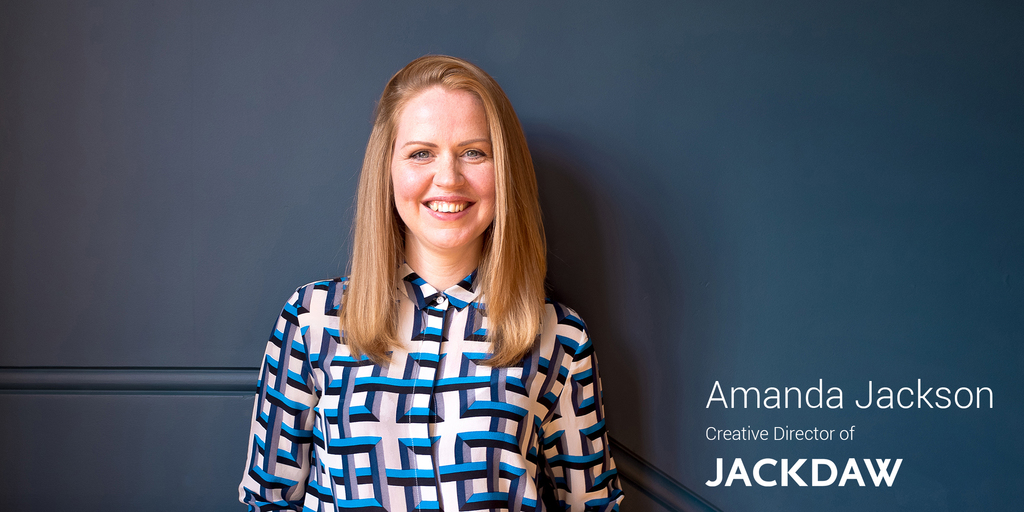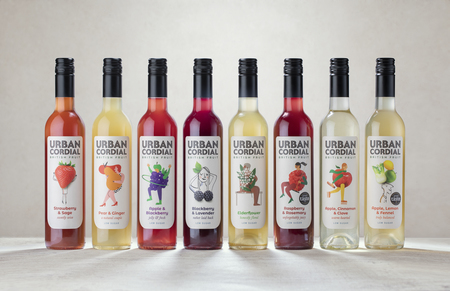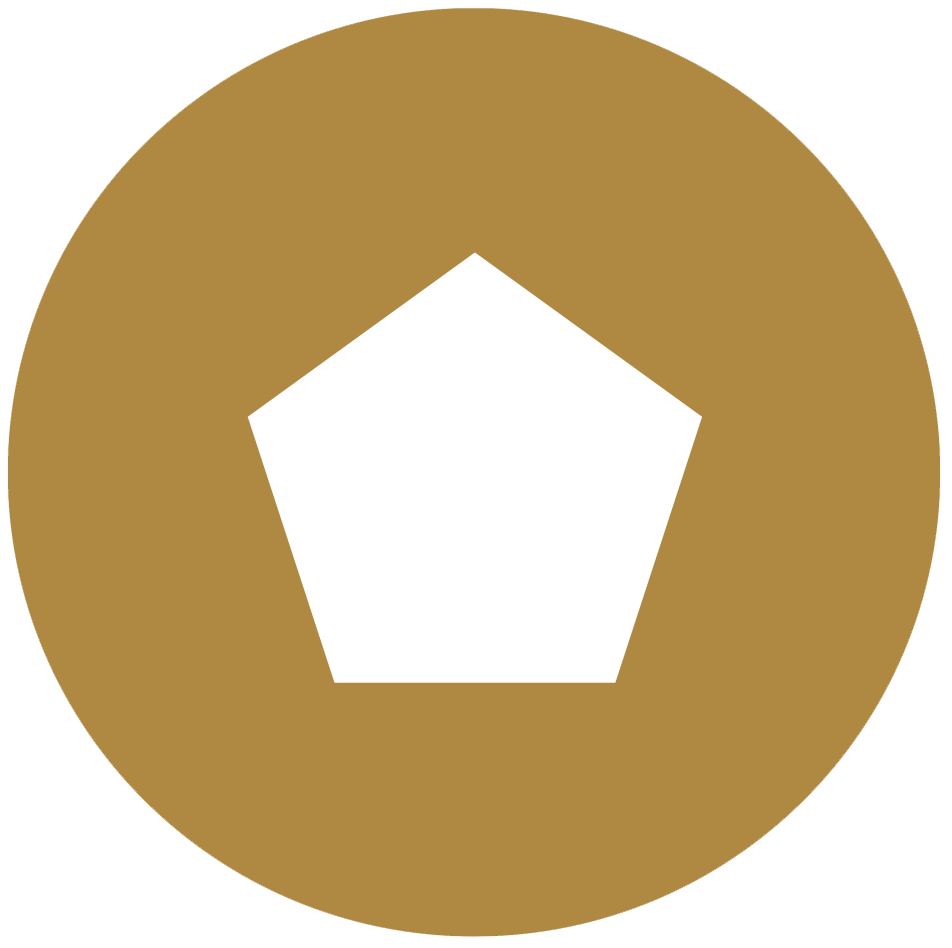
Back 10 questions with Amanda Jackson - Creative Director of Jackdaw Design
What was the starting point of your career in design?
My career started after graduating in 2005. I worked as part of the in-house design team for Abbey Santander (now Santander), acting as a brand guardian and implementing new corporate guidelines during the infamous rebrand. I then explored different design roles at Hallmark Cards, Neal’s Yard Remedies, The Team and Turner Duckworth before deciding on what kind of designer I wanted to be. The good news is that it’s entirely possible to find your niche in the design world! And my advice to anybody starting out is to go for the design challenges you enjoy and see where you land from there and be open-minded to new opportunities.
What made you realise you wanted to work in design?
I would say that design found me, rather than me choosing a career in design. I developed a passion for art at an early age and would often request sets of paints and colouring pencils for birthdays or Christmas. My parents encouraged me as much as they could, but they had modest jobs, my father was a driver and my mother worked as a school dinner lady, and they didn't know much about art careers, so all my guidance came from my teachers and peers. As my time at school was coming to an end, I knew that art college was the next logical step, but I wasn’t aware of all the job possibilities. The art foundation course at Barnfield College in Luton allowed me to explore and experiment in a wide range of art and design disciplines – textiles, photography, fine art, mixed media etc. When deciding on our specialisms, my tutors took one look at my portfolio and said “graphic design”. I wasn’t initially convinced and spent the next three years getting my thoughts together. And after a string of nine to five jobs that I hated I decided to “give this graphic design thing a go.” I went to Falmouth University where I discovered that graphic design was about design thinking and crafting big ideas beautifully. They taught me about creative problem-solving. And I grew to like it. That was 15 years ago and I’ve been working in graphic design ever since!
What drives you, what is your daily source of inspiration?
Two things really drive me above all else. Firstly, the idea is king – everything I create as a designer must have a strong idea, and not just look ‘nice’. Secondly, it must look nice! Without a visual appeal, a good idea will fail to connect. For me, the daily challenge to marry these two is what keeps me going. My day to day involves seeking out inspiration in all sorts of places, researching incredible images, illustrations, patterns, type styles, colour palettes, packaging designs – and creating them too. Designers are naturally curious creatures, like visual jackdaws, with an eye for the extraordinary. I’ve been thinking like a jackdaw for several years now and it’s a mantra I live by – I’ve even named my business Jackdaw Design! If you asked my friends or family, they would say that my real drive is my perfectionism. I guess I was born with it. I’ve always strived to be the best that I can be and grow my talents.
Which project(s) are you most proud of and why?
I’ve been lucky to work on some great projects in my time. But more recently I’m most proud of our work for Urban Cordial, because of the impact the design has had for this small start-up business. In less than 10 months Urban Cordial has enjoyed a hefty increase of 223% and secured coveted shelf space at Selfridges. The cordial business was set up to save delicious, asymmetrical, surplus fruit that would otherwise go to waste. Our brand solution took a unique angle – focusing on people, taste and flavour. This quirkiness is captured by the eight characters that appear as illustrations on every bottle and change depending on the flavour. As part of the process, we collaborated with a number of different illustrators in addition to our own design team. This innovative approach created an intriguing and clever design, with details to discover wherever you look on the bottle. No single one is alike. The biggest challenge was ensuring that it still looked like a unified range (with so many visual styles), so we created the U-shaped label to deliver a cohesive brand. And we also created a new bold wordmark for shelf standout. Finally, the new packaging is plastic-free, recyclable and sustainably sourced.
This project was all-encompassing and involved packaging, brand identity, copywriting, illustration and digital. We love helping start-ups find their path, and we’re proud to hear the client say: “We are thoroughly delighted with the new look for our brand. It embodies so much of what’s important to the Urban Cordial team: a devotion to craft, a love of creative expressions, and an obsession with quality. Jackdaw Design has helped us create something that is full of life and we know it will make a huge splash in the cordial market!” Natasha Steele, Managing Director, Urban Cordial.
What’s more, we are delighted to be a finalist in the Pentawards leading packaging design competition for our work on the brand.

What makes you want to run an independent studio? What’s the challenges and benefit of it?
I grew up in a time with a female Queen and listening to Madonna – both women at the top of their game, and I was lucky enough to always be encouraged to follow my ambitions and dreams. I had a taste of being my own boss when I went freelance, and along the way I found other talented people that I could team up, creating a business model that allowed me to work in the way that I want to. Running my own studio means that I can make my own rules and do the kind of creative work that I want to do. But setting up Jackdaw Design is probably the most challenging thing I’ve ever done, and the hardest thing is finding a work/life balance. At times, the job can be downright nerve-wracking with the contrast in business. Sometimes you are juggling multiple projects and other times it is really dry. Having a new business and marketing plan in place has been very helpful in this regard. The best thing I did was to ask people I admired for advice and what lessons they could share with me. Also having a network of people for outside perspective can keep you motivated when you need it! What’s fun is collaborating with other creatives, particularly as a small agency. People with different skills – illustrators, photographers, copywriters – all bring a fresh perspective to the work. It also increases our ability to take on larger projects. For me, the best thing is the sense of pride when we’ve completed a brilliant design project. The cherry on top is when we hear back from the client about the difference the design has made to their business growth. At Jackdaw Design we track the design effectiveness of our projects, which is something I wasn’t privy to as a ‘creative’, but something that is hugely motivating and rewarding because design has to be effective for every client.
Can you tell us more about Jackdaw Design?
Jackdaw Design is an independent studio with myself at the helm. Other team members include experienced photographers, writers, developers, and strategists who are handpicked to work on specific projects as and when their creative skills and talents are needed. It means we’re a small, nimble agency that can provide big agency experience. We work with both start-ups and established businesses, with a focus on branding and packaging. Recent projects include a new visual identity and packaging for Borough22 doughnuts and a licensing style guide for the RSPB. We’re based in London and have a proven track record for effective design.

Why do you want to participate in an international award like us? What does it mean to you?
For a studio our size, awards are a big investment and this year is the first time we’ve participated in an international design award. We chose to enter the Pentawards as they have an established track record and reputation amongst our international peer group – reflecting excellence in packaging design. Everyone loves to be recognised for a brilliant project that the whole team has worked their socks off for and we can’t wait for the Gala Ceremony next month!
As a female leader and managing your own studio, do you ever encounter any difficulties in your career because of your gender?
70% of graphic design students are women, yet only 11% of creative directors are female. It’s 2019 and yet there’s still an issue of inequality in our industry. Being a female leader in a male-dominated industry can often be tiring, but I’ve always believed in my abilities and never lost my humanity. I’d say don’t be afraid to be seen and heard.
How would you change the industry to have more equal gender, any project to help them? Or any way we can change?
My advice would be to support the people coming up behind you, to help female creatives push through to the next stages of their careers. Speak to any woman who is in a senior role in our industry and they’ll all agree on one thing: having a mentor has helped them greatly in their careers. Mentoring is a well-recognised and powerful tool that enables people to make connections and allow deep, two-way learning. I’ve benefitted from having a mentor and I’ve also been a mentor for Kerning The Gap. As a mentor, you have the opportunity to build up someone’s confidence and skill set. And believe it or not, watching someone else accomplish their goals can feel just as incredible as achieving those goals yourself.
What significant change have you seen in the industry since you started out?
These days, brands are looking for direct access to strategic and creative brains rather than paying over the odds on project management fees and swanky glass offices. Our industry has fragmented and is now increasingly dominated by small and medium-sized players, often with virtual teams, that are really changing the game. It’s a good time to be a client, with a huge increase in choice when it comes to choosing who to work with as a result of new partnerships and the more flexible approach that smaller players can offer. With this change in landscape, larger agencies are evaluating their fees and value propositions, whilst the smaller agencies need to take time to focus on their processes and build their own brands. Design awards such as Pentawards are a key channel to build your brand and engage those clients previously only open to working with the large agencies.
About Amanda...
Amanda Jackson is the founder of Jackdaw Design, an independent creative studio specialising in branding and packaging. She works with both established businesses and a number of innovative food and drinks brands, such as Urban Cordial, Claudi & Fin and Cawston Press. Alongside design work for clients, Amanda is a regular speaker at Arts University Bournemouth and is a mentor for Kerning The Gap.
Find out more about Jackdaw Design: www.jackdawdesign.co.uk






